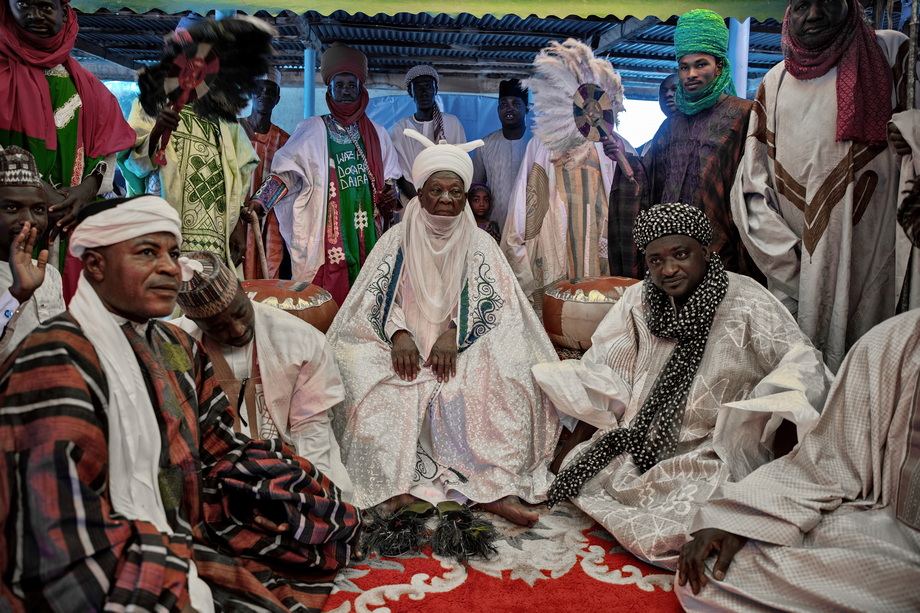The Hausa tribe is one of the most influential, ancient, and culturally dynamic ethnic groups in Nigeria and West Africa. As one of the largest ethnic populations on the African continent, the Hausa people have played a central role in shaping regional history through language, commerce, religion, governance, and education.
This article explores the history of the Hausa tribe, the development of Hausa culture, and a brief history of the Hausa language, all of which contribute to their enduring significance in modern-day Nigeria and beyond.
Origins: The History of the Hausa Tribe in Nigeria
The history of the Hausa tribe in Nigeria spans over a millennium. The Hausa are believed to have originated from a federation of city-states known as the Hausa Bakwai, or “Seven True Hausa States”: Kano, Katsina, Zaria, Gobir, Daura, Rano, and Biram.
According to legend and historical documentation such as the Kano Chronicle, these states were founded by descendants of Bayajidda, a mythical hero from Baghdad who married the queen of Daura. Their offspring became the progenitors of the rulers of the Hausa city-states, which quickly developed into flourishing centers of commerce, governance, and culture.
Over centuries, these Hausa states maintained diplomatic and trade relationships with other parts of Africa, including Mali and Songhai empires, and even with parts of the Middle East. Their growth was aided by strategic locations that facilitated the trans-Saharan trade routes.
Hausa Culture and Its Lasting Legacy
The history of Hausa culture is one of deep tradition and resilience. Hausa culture is known for its modesty, craftsmanship, Islamic influence, and strong social hierarchy.
Key Elements of Hausa Culture:
- Architecture: Notable for its use of sun-dried mud and intricate geometric patterns, especially in the ancient cities of Kano and Katsina.
- Clothing: Men wear flowing gowns called babban riga with embroidered caps (hula), while women often dress in colorful wrappers, veils (gyale), and ornate jewelry.
- Cuisine: Signature dishes like tuwo shinkafa, miyan kuka, fura da nono, and kilishi are widely enjoyed.
- Festivals: The Durbar Festival, held during Eid celebrations, is an extravagant display of horsemanship, music, and royal pageantry.
- Arts: Hausa people are renowned for their leatherwork, weaving, dyeing (notably in Kofar Mata dye pits), and storytelling traditions.
These cultural hallmarks have stood the test of time, continuing to thrive in rural villages and modern cities alike.
Hausa Language: A Brief but Powerful History
A brief history of the Hausa language reveals its journey from a regional tongue to a major African lingua franca. Hausa is classified under the Afroasiatic language family, specifically within the Chadic subgroup.
Historical Milestones:
- Originally passed down orally, the Hausa language was first written using Ajami script (modified Arabic).
- During colonial times, it was transcribed into the Latin alphabet, allowing for broader literacy and documentation.
- Today, Hausa is taught in schools, used in national and international broadcasting, and spoken by over 60 million people.
The history of the Hausa language reflects both the tribe’s resilience and its openness to intercultural exchange. Hausa is now a dominant language in Nigerian media, with major outlets like BBC Hausa, Deutsche Welle Hausa, and VOA Hausa broadcasting daily news.
Islam and the Rise of Hausa Influence
The Hausa adopted Islam as early as the 11th century, making it a central pillar of their culture and legal systems. With Islam came the construction of mosques, madrasas (Islamic schools), and the implementation of Sharia law in various Hausa states.
The Islamic revival of the early 19th century, led by Shehu Usman dan Fodio, gave rise to the Sokoto Caliphate. The Hausa states were brought under a unified Islamic rule, transforming them into administrative centers of religion, politics, and commerce.
The caliphate system introduced a structure that is still visible today in the emirate councils of Northern Nigeria. Emirs serve as both traditional and religious leaders, a testament to the enduring legacy of Hausa-Islamic governance.
Hausa in Contemporary Nigeria
In modern Nigeria, the Hausa remain a dominant sociopolitical force. Northern Nigeria, where the majority of Hausa people live, is home to bustling urban centers such as Kano, Sokoto, Kaduna, and Zaria.
The Hausa have produced numerous national leaders, intellectuals, and entrepreneurs. The tribe’s influence extends into Nollywood via Kannywood, the Hausa-language film industry, which produces hundreds of movies each year.
Education and business among the Hausa have modernized significantly, with a younger generation embracing both tradition and innovation. Meanwhile, Hausa remains a compulsory subject in many Northern schools and an official regional language in Nigerian governance.
The history of the Hausa tribe is more than a chronicle of the past—it is an enduring legacy that continues to shape Nigeria’s identity, values, and future. From the scholarly halls of Sokoto to the vibrant markets of Kano, the Hausa people exemplify a fusion of tradition and progress.
Understanding the history of Hausa culture, the evolution of their language, and their political significance helps contextualize not just Nigerian history, but the broader story of African civilization.
Whether through the brief history of Hausa language, the architecture of ancient cities, or the horse-riding warriors of the Durbar festival, the Hausa spirit remains unmistakable and alive.
Read Also:
Niger Republic dumps French, adopts Hausa as new national language
Barau Jibrin urges Kano defectors: Back APC, Tinubu
Top 25 Nigerian Languages now gaining global recognition



